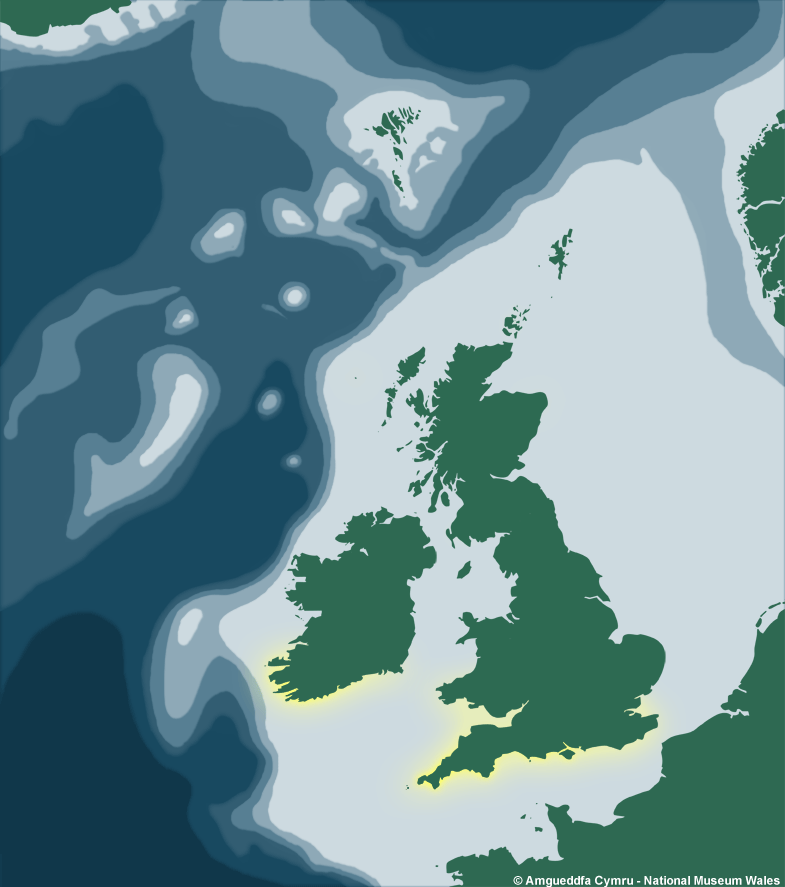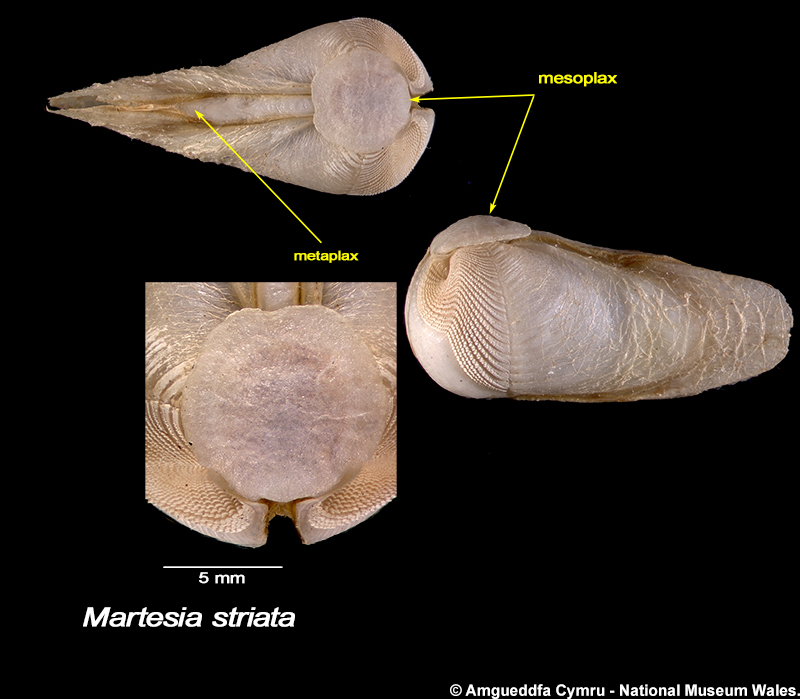Martesia striata (Linnaeus, 1758)
Pholadoidea : Pholadidae | Non-native |
| Tebble name: | Martesia striata Linnaeus |
| Smith & Heppell name: | Martesia striata Linnaeus |
To size: To 50mm. Shell Structure: Main body robust but brittle; posterior extension fragile. Equivalve: Equivalve. Equilateral: Inequilateral beaks close to the anterior. Tumidity: Tumid, especially across the umbos. Outline: Main body subovate, posterior extension narrower and may be irregular; anterior broadly rounded with initial pedal gape filled by the callum. Umbonal reflection covered by a large subcircular mesoplax; dorsal area behind mesoplax covered by a long lanceolate metaplax; posterior ventral region covered by a long lanceolate hypoplax. Contour: Main body of shell divided by a radial groove; posterior extension distinctly demarcated.
Sculpture: Area anterior of radial groove decussate; posterior area with weak concentric ridges; posterior extension with strong growth stops. Ligament: Small. Pallial Musculature: Apophysis long, thin; pallial sinus very deep; anterior adductor scar on umbonal reflection, posterior adductor scar large close to dorsal margin, siphonal muscle scar large in a vertical orientation; accessory ventral adductor scars on either side of condyle. Periostracum: Straw coloured, thin. Colour: Dirty white. Additional Characters: Shells of same species can vary and the most consistent species identifying character is the shape and design of the mesoplax, even in juvenile specimens. In M. striata the mesoplax is large, circular with irregular furrows or wrinkles. The mesoplax can be very variable but is separable from fragilis by lack of concentric sculpture.










